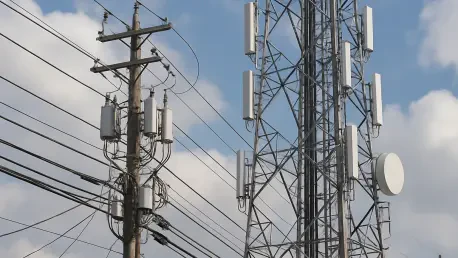In a significant move that promises to reshape the nation’s architectural landscape, Cambodia’s Ministry of Land Management, Urban Planning, and Construction has officially mandated the integration of telecommunications infrastructure in every new construction endeavor. Unveiled on June 16, 2025, this directive is pivotal to Cambodia’s expansive strategy aimed at spurring economic growth and optimizing social welfare by enhancing service delivery and infrastructure capabilities. This new directive emphasizes the necessity for comprehensive telecom facilities in all types of projects, whether residential communities, commercial buildings, or industrial zones. Specific guidelines stipulate dimensions for spaces dedicated to antennas and internal systems to ensure seamless connectivity. Collaboration with telecom operators is imperative, fostering adherence to stringent technical standards and facilitating widespread compatibility with various service providers. By focusing on better communication avenues, this initiative aligns with the nation’s goals to harness technological advancements and cater to the dynamic needs of its populace.
Enabling Seamless Connectivity
One standout feature of Cambodia’s new directive is the requirement for designated spaces for telecom installations across diverse projects, ensuring every corner of urban development supports essential communication tools. Developers must now allocate spaces ranging from as small as 2.25 square meters for antenna stations in residential and industrial areas to a much larger minimum of 12 square meters for In-Building Solutions (IBS) systems in commercial properties. These measures are not merely architectural caveats but are rooted in the principle of establishing a robust telecommunications backbone throughout the nation. Moreover, with the increased dependency on advanced communications, ensuring optimal connectivity becomes non-negotiable. Emphasizing the cable networks aspect is crucial, as developers must establish comprehensive telecommunications cabling within site-specific areas, further highlighting its importance to achieve seamless integration with existing infrastructure. These developments are critical for ensuring the burgeoning demands of digital communication are met efficiently, ultimately contributing to the nation’s strategic goals of progressive socio-economic growth.
Collaborative Efforts and Future Implications
Cambodia’s Ministry of Land Management, Urban Planning, and Construction has introduced a transformative mandate ensuring that all new construction projects incorporate telecommunications infrastructure. Announced on June 16, 2025, this directive is a key element of Cambodia’s broader strategic plan aimed at fostering economic growth and enhancing social welfare. By improving service delivery and infrastructure capabilities, the country seeks to better serve its diverse population. The mandate requires comprehensive telecom facilities in various types of developments, whether residential, commercial, or industrial. Specific guidelines set requirements for dimensions allocated for antennas and internal systems to guarantee continuous connectivity. Working with telecom operators is crucial to maintain high technical standards and ensure compatibility across service providers. This focus on enhancing communication aligns with Cambodia’s ambitions to leverage technology and meet the evolving demands of its people, ensuring the nation stays competitive in a rapidly advancing digital era.









